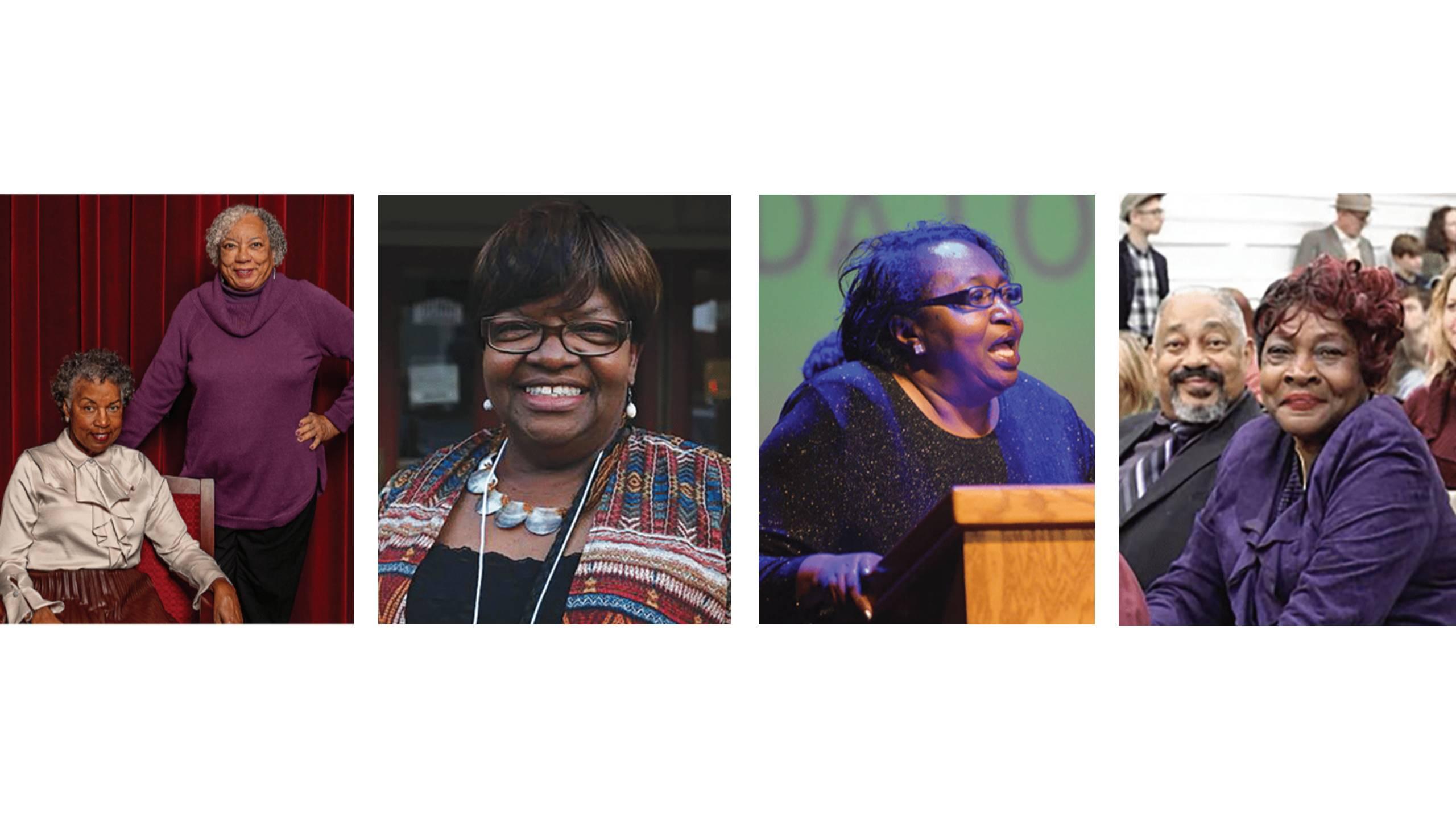It was in 2017 that local artist Alice Woodruff began to get angrier and angrier as she heard and read about the sexual assault and harassment accusations swirling around movie mogul Harvey Weinstein.
She describes it as “a tsunami of revelations,” not only about Weinstein but other powerful men in business, finance, and media. With each new story Woodruff’s anger, outrage and anxiety was fueled, which compelled her to seek a way to handle the negative emotions that had bubbled up.
“Art is an outlet for me,” she explains. “My creative impulse is often driven by visceral reactions.” After about six months of depression, which had kept her from sculpting, she decided to go back to what was familiar and throw some large porcelain vases on her pottery wheel to see if she could break through her creative block.
When she happened to stack one large pot on top of another, she suddenly had her breakthrough. Stacking the forms gave her the shape of a woman’s headless torso, she writes on her website, alicewoodruffpottery.com.
“Suddenly the intense feelings of anger and helplessness…were being channeled into those female shapes, those representational figures. My muse had shown herself literally.”
A lifelong Athenian, Woodruff has had an interest in art since high school. She worked as a production potter for 24 years before going to nursing school and becoming a nurse practitioner. In 2011 she retired from nursing and returned to pottery. She says her knowledge of anatomy has been helpful in creating the human form sculpture that has occupied her energy these last several years.
Woodruff says that in creating each of the pieces in what became the 100-piece exhibit, Warrior Women: From Invisible to Formidable, her intention was to look at the story.
“Story telling captures identity and allows us empathy,” she says. “I think women have universal experiences and we are more open to the stories now, so we are hearing more of them than in the past.”
The first sculpture she created tells the story of Jodi, named for Jodi Kantor, the reporter who broke the Weinstein story. It depicts the vulnerability of women under attack as well as the fear of speaking personal histories. Like all the sculptures in the series, Jodi is a headless torso with distinctive and meaningful attributes.
“They have no heads and start with vessel form,” says Woodruff. “This lends them to a universal experience. Without the head we are allowed to extrapolate that it’s not just this person or that person but could be you.”
“These first 11 figures were built fast and furiously,” she writes. “They are all fairly interchangeable and represent the mass victimization of women.”
Women as vessels
While the roots of Woodruff’s series began in anger at women’s degradation, her next stage evolved into “Women as Vessels,” in which she represents and explores women’s roles and their intrinsic importance to the human race. Se describes these pieces as “more safely matronly,” not sexualized.
Other works in the series are her interpretation of historical women whose stories are often overlooked, such as Lucy who was an enslaved 12-year-old girl. Lucy, along with many others of her day, was the victim of experimental surgery performed without anesthesia. Others reflect women whose voices have successfully risen above the crowd, such as Georgia O’Keefe and Sonia Sotomayor.
Some of Woodruff’s sculptures are not focused on one woman but reflect general concepts and political concerns such as “Choice,” which speaks to the issue of autonomy; “Collateral Damage,” addressing victims as a byproduct of war and “For the Love of Country,” drawing attention to the crisis of sexual harassment of women in the military.
Divided into poignant groups, several sculptures address Woodruff’s personal battle with breast cancer depicting her process of accepting the diagnosis and dealing with the physical and emotional challenges of surgery and chemotherapy.
While each figure is crafted with features that tell her story, such as thin vulnerable arms, wounds, and scars, some are endowed with tools of a vocation and others are armed with weapons. Lorena, for example has an ax and “would not hesitate to defend herself.”
Woodruff says of creating and weaponizing Lorena, “I was tired of women being victims. There’s nothing subtle about it. She introduced to my consciousness what we need to do to move our class of human being into a more equitable situation.”
Last fall, Warrior Women was on exhibit at The Oconee Cultural Arts Foundation for a month, and in March, Woodruff participated in a community conversation and exhibit of select pieces at UGA’s Russell Library. Many in the audience expressed the hope that the exhibit would be shown in other venues. There is a companion book with photos, descriptions, and stories for each piece.
“Women are not alone and those who choose not to see the stories of women will have a harder time covering their eyes,” Woodruff says of her bold and thought-provoking art. Her hope is that the collection of 100 sculptures will promote community conversations that lead to political change.
As for herself, “I’ve been telling myself I need a break from the trauma of women’s stories,” she says. Although she doesn’t know yet what direction she will follow, “More than likely, it will be about women.” \
Kelly Capers is a freelance writer and homesteader who lives in Oglethorpe County.





Reader's Comments
As a potter who knows the agonies of making hand-built forms, this is an incredible showing of craft and technique. However, the meanings and deep feelings each sculpture evokes is the most remarkable artistry of all. I am keeping this article to show potter friends
Thank you
Trew Bennett
Buck Creek Pottery
Nelson County, VA
Thank you Betsy, for this wonderful story about Alice Woodruff’s sculptures. And thank you Kelly Capers for reporting so beautifully on the meaning of these works. This was splendid, and those of us who have wanted to share Alice’s work with a wider audience are grateful to you both.